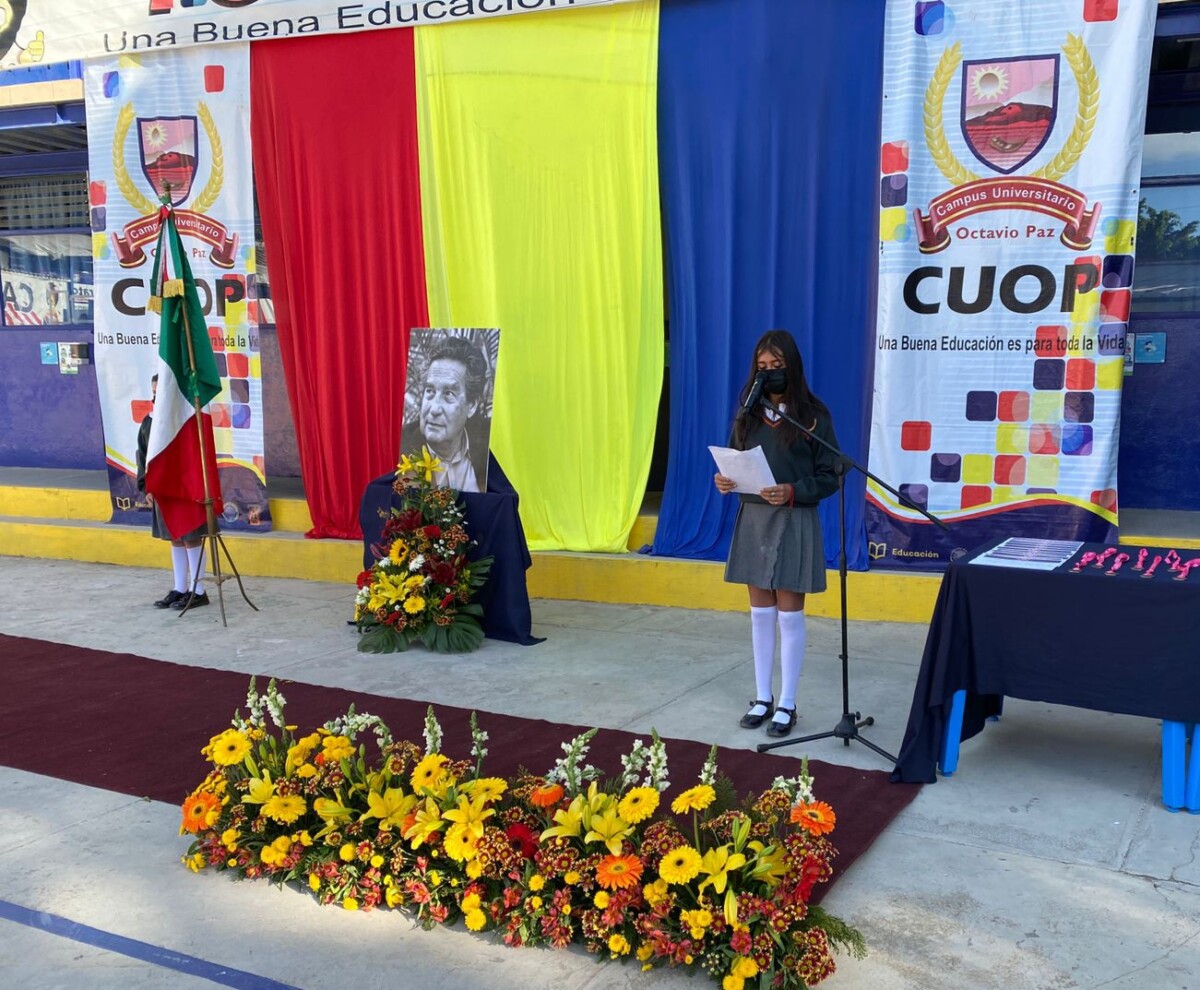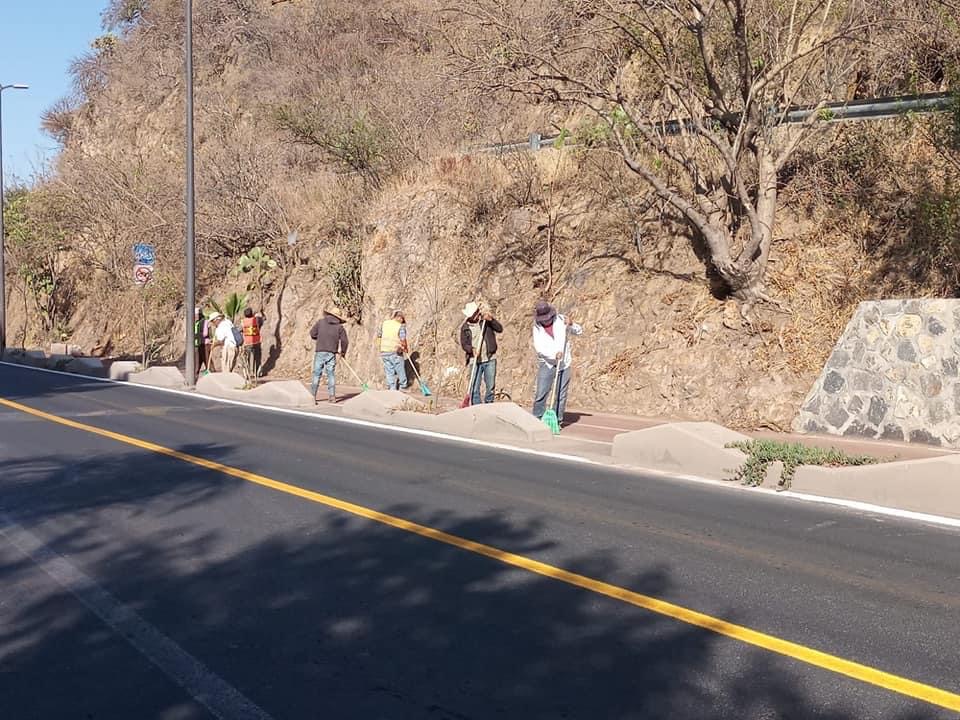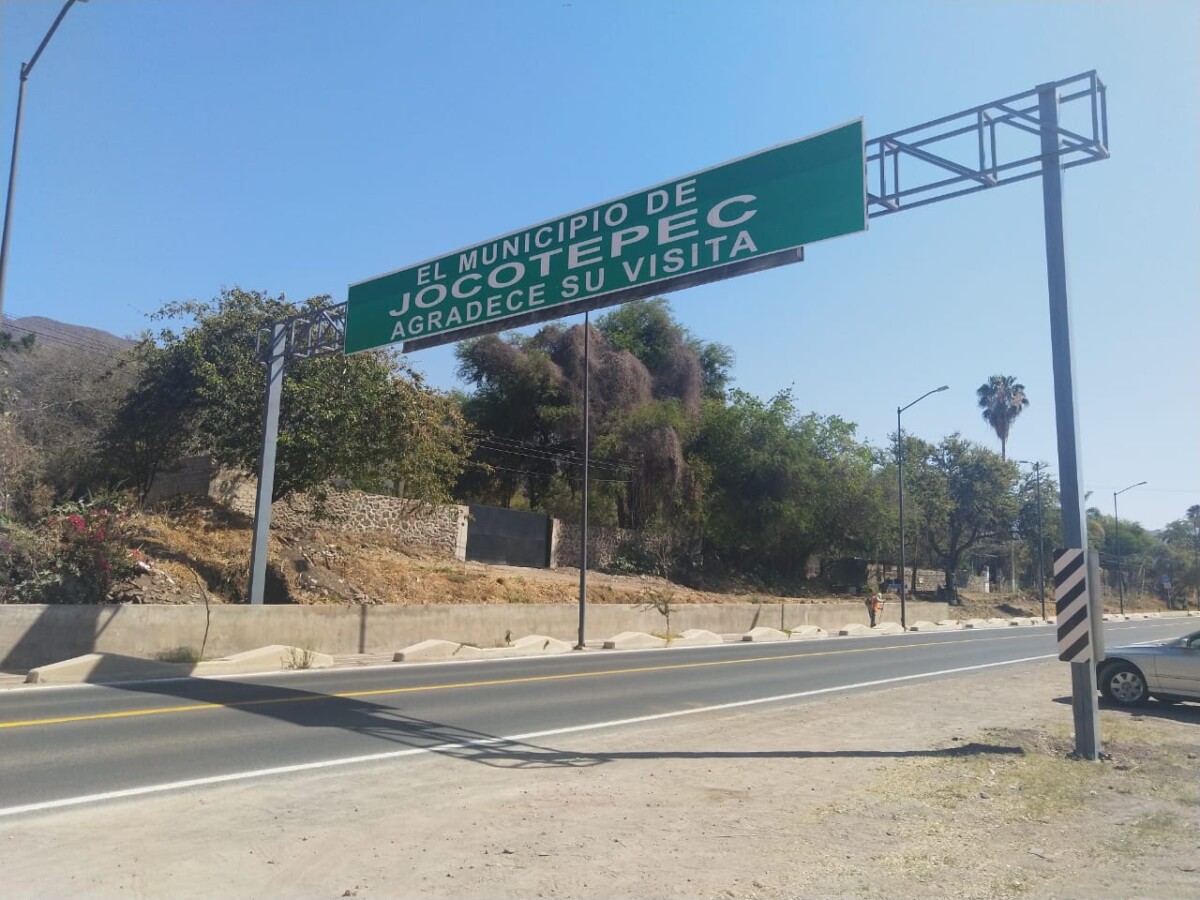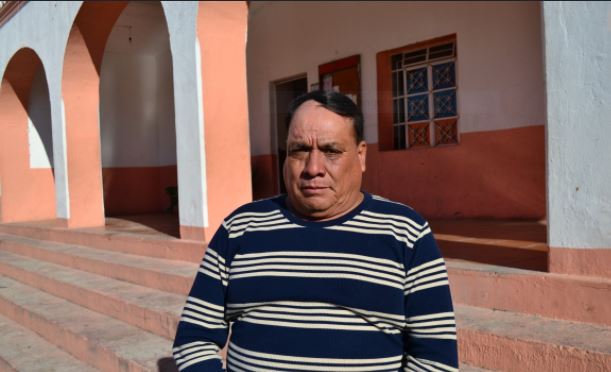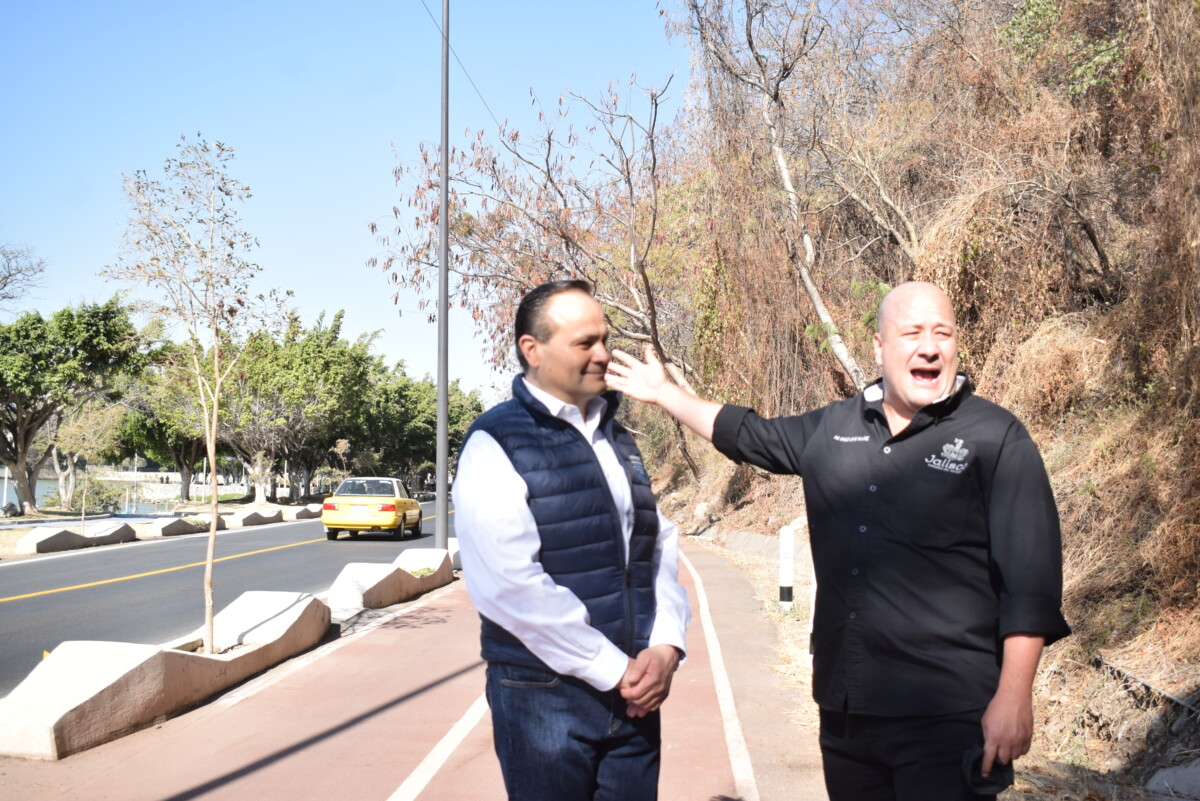municipio
Octavio Paz’s 108th birthday celebrated with cultural activities
CUOP celebrated the birthday of Octavio Paz with biographies and reading of poems by the writer who gave his name to the educational institution.
Editor. With sports and cultural activities, the students of the Octavio Paz University Campus (CUOP) commemorated the 108th birthday of the Mexican poet and writer who gave his name to the campus located in Ajijic.
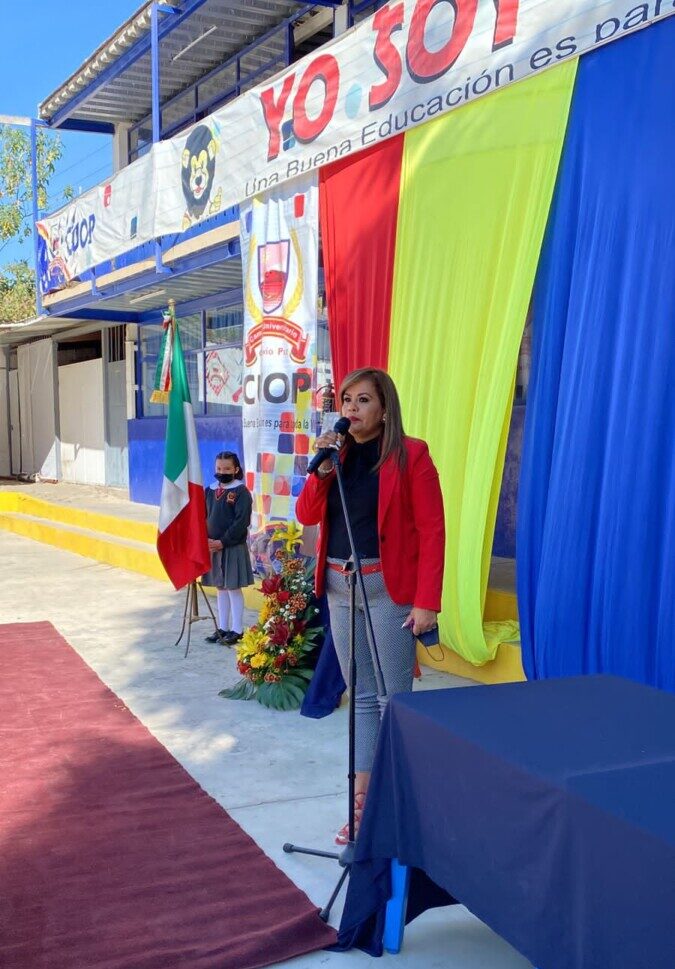
Elizabeth Gutiérrez, Rector of CUOP, thanked and congratulated all the participants in the event.
The event, held on March 31, began with the honoring of the national flag under the custody of the elementary school escort. Following this, aspects of the poet’s life were narrated by high school students, while the writer himself was brought to life by the elementary age students.
In addition, the youngest students of CUOP, nursery and preschool students, released balloons symbolizing the eternity of his work.
The high school participated with the interpretation of the poem «Otoño» (Autumn), which was presented in Spanish and English.

During the tribute, the Mexican writer was brought to life thanks to the presentations of elementary school students.
Students taking part in the curriculum of the University of Guadalajara (UdeG) read aloud the story «El Ramo Azul,» which concluded with an oral tour of phrases of the poet’s work. The ceremony continued with the presentation of awards to students who participated in the LIMATEJ mathematics tournament, organized by the Ministry of Education of Jalisco (SEJ), as well as to the students who won first and second place.

The youngest students of CUOP, nursery and preschool students, carried out a balloon release.
Awards were given to the teachers’ team that won the volleyball tournament a few days prior to the celebration, and uniforms were given to the men’s and women’s high school volleyball teams. The high school students won third place in volleyball at the municipal level.
To conclude the event, Mrs. Elizabeth Gutiérrez, Rector of CUOP, thanked and congratulated all the participants in the event, inviting them to continue their hard work and reaping good results in both academics and sports.
Translated by Rebecca Zittle
Pro Mexico Civil Association of San Juan Cosalá to hold fundraiser
Pro Mexico Civil Association of San Juan Cosalá with products for sale at a previous fundraising event. Credit: Courtesy of Pro México Civil Association of San Juan Cosalá
Alma Serrano (San Juan Cosalá).– Next Friday, April 29th, the Pro México Civil Association of San Juan Cosalá will hold a charity event to raise funds for its training and workshops. The event starts at 4:30 pm and will be held at the Racquet Club’s Club House, located at Raúl Ramírez #37. The event includes a Mexican dinner, snacks, drinks and music, as well as a historical talk about San Juan Cosalá given by Gabriel Chávez Rameño.
Tickets are $400.00 per person. For more information contact: María Blanco, Coordinator of Community Development at 33-3590-6442.
Translated by Amy Esperanto
Governor Alfaro’s visit to the lakeside area prompts overdue road maintenance and other work
Dirt, sticks and stones left by the October mudslides were finally removed from the bike path by city hall personnel during the Governor’s visit to supervise public works.
Staff.– Let him come more often! Governor of Jalisco, Enrique Alfaro Ramírez, visited the lakeside area on Friday, March 25th to supervise the local government. His visit not only mobilized extra security, but many municipal employees gave their best effort to make the streets and roads look impeccable. The streets of the Chapala and Jocotepec municipalities looked especially well-maintained. In one day municipal employees performed all the maintenance that had not been done since the administration took over in October.The administration made a clear effort to paint a very rosy picture of the lakeside area for the governor. In Chapala there were no garbage piles to obstruct the governor’s inquisitive eye. The intersection at the junction of the Ajijic highway and bypass had traffic personnel, which is rare even on the busiest weekends. Chapala’s boardwalk, in addition to not having a single piece of garbage, had its green areas watered, and the walkways were washed very early in the morning.
In San Juan Cosalá, Alfaro cycled along the bike path with the presidents of Chapala, (Alejandro de Jesús Aguirre Curiel) and Jocotepec (José Miguel Gómez López). For this occasion, the bike path was finally cleared of sticks, stones, and dirt left by the October landslides.
State workers even replaced the entrance sign welcoming visitors to Jocotepec (from the border with Chapala). Faded road signs were re-painted. If only the governor would come more often so that street maintenance and public services would work this way all the time.
Translated by Amy Esperanto
Municipality of Jocotepec sign is replaced
Jocotepec access sign is replaced
Alma Serrano (San Juan Cosalá).- The municipality of Jocotepec welcomed the Governor of Jalisco, Enrique Alfaro Ramírez with a new sign, for his visit to the Chapala Lakeside on March 25.
Days before, state personnel went to the Chapala-Jocotepec highway at the height of La Mojonera, on the border of the town of Ajijic with San Juan Cosalá, to replace the access sign to the municipality because it was incomplete and with and outdated structure at one of the ends.
Translated by Christalle Dalsted
Local student wins state math tournament
Jhaneiva Sinahi Mondragón Morales won first place in the LIMATEJ tournament in school zone 96. Photo: Alma Serrano.
Alma Serrano (San Juan Cosalá).- Ten-year-old Jhaneiva Sinahi Mondragón Morales, a student from San Juan Cosalá, won first place in the Jalisco State Mathematics League competition. The fifth grade student stood out in the math skills tournament held on March 23 at the facilities of the Terranova Institute, located in Ajijic. Fifty-two fifth and sixth grade children competed in two categories of 26 students each. All study in school zone 96, which includes schools from Chapala to the El Chante delegation in Jocotepec.
Sinahi Mondragón earned the highest score of the day and will represent her zone in a regional tournament, the date and place of which have not yet been defined.
Sinahi Mondragón is a student at Escuela Primaria Urbana, 699 Ignacio Zaragoza, San Juan Cosalá.
Translated by Elisabeth Shields
Reabren más de 2 mil locales tras incendio en Mercado San Juan de Dios
Desde el pasado domingo, el alcalde de Guadalajara, Pablo Lemus, acompañó a los comerciantes en la reapertura de los locales. Foto: Facebook.
Redacción.- Tras el avance de los trabajos de limpieza y reacondicionamiento por el incendio registrado en el Mercado Libertad o San Juan de Dios, el pasado jueves 31 de marzo, más de 2 mil locales ya reanudaron operaciones.
Más del 70 por ciento de los comercios del inmueble reanudaron sus labores; 500 abrieron el domingo y más de mil 500 se sumaron durante el lunes.
Al respecto, el presidente municipal de Guadalajara, Pablo Lemus Navarro, informó que un total de 2 mil 40 locales, de los más de 3 mil existentes, ya abrieron, mientras que los más afectados por las llamas serán reubicados temporalmente.
“Iniciamos el confinamiento de la zona incendiada, que está prácticamente limpia, para poder iniciar los trabajos de reconstrucción. No es sencillo porque tenemos que seguir un proceso de licitación para poder asignar esta obra y esperamos iniciar los trabajos de reconstrucción en máximo 10 días; estamos calculando que pudieran tardar entre 4 y 6 meses”, declaró Lemus.
Este martes inició la reubicación de los espacios afectados por el fuego a la explanada central, los baquetones y parte del estacionamiento del Mercado San Juan de Dios; la plaza de La Estampida y la plaza que se encuentra sobre la calzada Independencia.
Asimismo, se anunció el arranque de la entrega de apoyos económicos que ascienden a 25 mil pesos a los comerciantes afectados de los 426 locales consumidos por el incendio. Serán 10 millones de pesos los destinados por el Gobierno de Guadalajara para este rubro.
Water shortage exacerbated by low water levels; Zaragoza well continues to collapse
The delegate Carlos Vázquez Reyes perceived as «normal» the shortage due to the seasonal low water level, although he acknowledged that it was aggravated by the failure in the well. Photo: File.
Alma Serrano (San Juan Cosala).- The failure of the Zaragoza well pump, together with the dry season, has left the residents of San Juan Cosalá without drinking water.
In this regard, the delegate of the town, Carlos Vázquez Reyes reported that they are already working on the resolution of the failure of the well, which last December recorded a similar failure.
«We just fixed the Zaragoza well in December 2021 and now we have the same problem as before; last time it took three months to fix,» he commented.
Although Vázquez Reyes saw the seasonal shortage as “normal,” he visualized the possibility of digging a new well to the north of the delegation, on Del Cardenal street, to solve the shortage and distribute the vital liquid in a better way.
«This problem is normal for the season because the pipes are clogged with mud and the water does not have adequate flow. Then the water stagnates in those areas and does not reach all the houses. In addition, the pump throws a lot of mud and some pipes are old,» explained the delegate.
Despite the fact that the problem has been going on for more than two months, Carlos Vázquez said that a «fair» distribution of water has been made, since they try to send it proportionally to all the houses, even at night.
Finally, the delegate informed that the corresponding authorities are already working on the failures of the Zaragoza well, although it is not known with certainty when the service will be regularized, so he asked residents to conserve the resource.
«Let’s take care of the water, if you don’t need it, please let it go to someone who does. I know that people do pay for the water, but that does not give them the right to waste it,» he concluded.
Translated by Kerry Watson
Governor Alfaro announced the rehabilitation of the Auditorio de la Ribera will be completed by the middle of the year
Architects and those in charge of the work, explained the works to the Governor of Jalisco, Enrique Alfaro Ramírez. Photo: Sofía Medeles.
Sofía Medeles (Ajijic).- After his March 25 tour of the Auditorio de la Ribera in Ajijic, Jalisco Governor Enrique Alfaro Ramírez, announced that the remodeling of the Auditorio will be completed in approximately 4 months.
Although previously, those in charge of the project had said that they had no date for the beginning of the third and last stage of the renovation, Alfaro Ramírez stated during his visit that it should be finished in four months and the cultural center should be up and running by the middle of this year.
«The last stage includes the entrance space, details in the auditorium and adjustments that had to be made at the end, but more than anything else, the entrance, the pond and specialized equipment,» the governor said.
He pointed out that, although 70 million pesos have already been invested in the project so far, a budget for the equipment for the center has yet to be designated.
«A budget is being developed and we are looking to involve the businesses of Chapala that offered to help. The budget will be ready in the following weeks and we will see if the private initiative will lend us a hand. Surely the equipment will also be ready within the remaining four months,» he added.
At the end of the tour of the facilities of the cultural complex, Chapala municipal president Alejandro de Jesús Aguirre Curiel, thanked the governor for the space, asserting that it will be of great importance for Ajijic, which has many talented performing artists and traditions, so it will be a good place for them to continue developing.
Also present during the governor’s visit were Alejandro Guerrero, one of the architects in charge of the project, Lourdes González Pérez, head of the state’s Culture Secretariat, and congresswomen María Dolores «Lolis» López Jara , and Claudia Murguía Torres.
The rehabilitation work began in 2020 and is part of a state project called «Cardinal Culture», which aims to develop cultural activities outside the capital of Jalisco. The auditorium will not only host artistic presentations of different disciplines, but will also host courses, as well as offices of the Jalisco Ministry of Culture.
Translated by Patrick O’Heffernan
Anti-fences movement Back in action!
Approximately 25 people helped in the removal of the cyclone fences. Photo: Sofía Medeles.
Sofía Medeles (Ajijic).– After more than six months of inactivity, the group Pueblos Unidos de la Ribera resumed removing illegal fences on Federal land, this time in the eastern part of Ajijic. The group rallied about 25 people on March 28 to remove two fences that obstructed the passage along the shore of Lake Chapala.
The first fence was located at the end of Donato Guerra street . The group contacted the owner by telephone who claimed to have a concession from the National Water Commission (CONAGUA) and to maintain this fence for the safety of her home. However an agreement was not reached with her to leave the fence intact.
Initially, the woman agreed to show her documents supporting the use of the federal land, but minutes later, she told them that she should not show anything to anyone other than an authority, so the group proceeded to remove the chain-link cyclone fence
During the first demolition, officers of the Chapala police arrived and said that only a report would be made of the action. However, several activists pointed out that they were asked to identify themselves and have their faces photographed. They complained that they felt intimidated by the officers because they were carrying weapons although no weapons were drawn at any time.
Later, the protestors moved further to the east of the town, at the top of Revolucion Street, where a farm under construction had been fenced almost to the edge of the lake. The chain-link was quickly removed, however, the next day it was put up again.
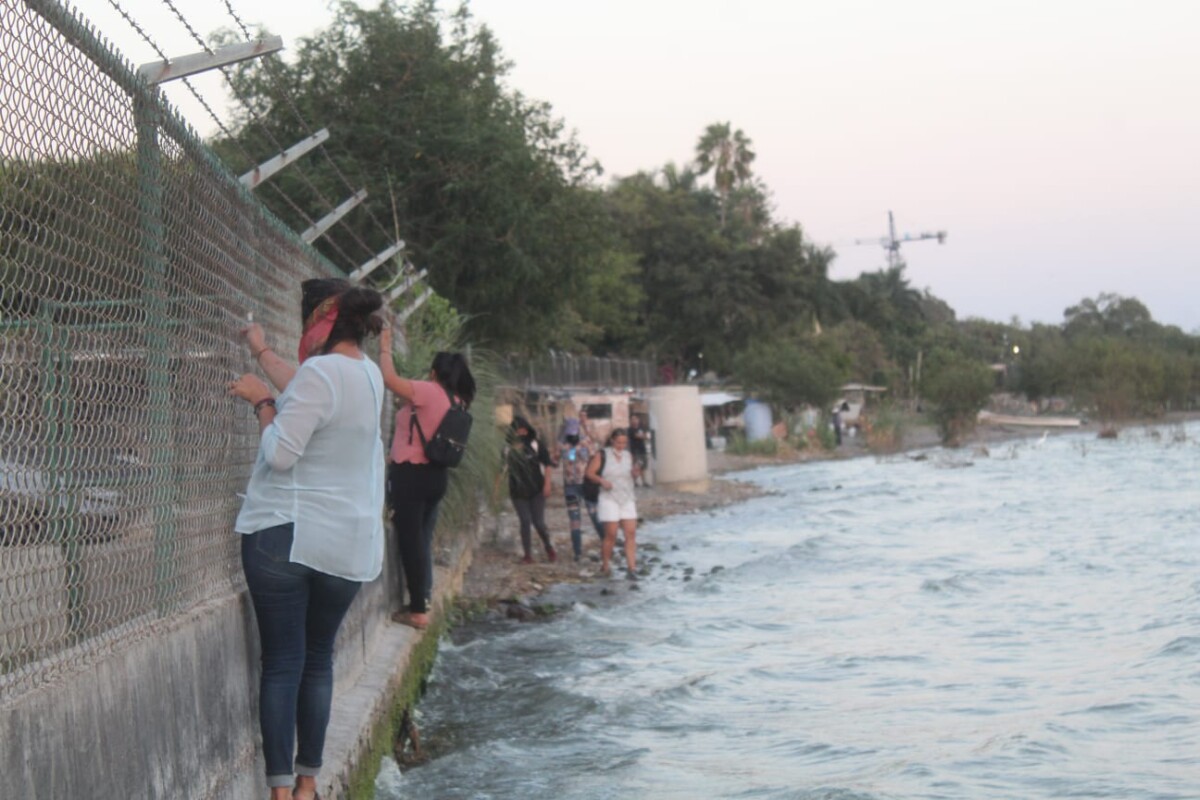
A citizen on horseback supported them by pulling the cyclone mesh to tear it down. Photo: Sofía Medeles.
After the removal of these invasions of federal property, those gathered talked about other points in Ajijic that have the same situation, agreeing to monitor and re-remove fences in the places that had already been liberated to the west of the delegation, as well as to help people from other towns to replicate the «anti-fencing» movement.
» We miss the times when you could walk from Chapala to Jocotepec along the lake shore. Those times will return, if we all unite for this cause, so that our descendants can enjoy the free beaches, which are everyone’s right,» said a member of Pueblos Unidos de la Ribera.
Last April 1st, the activists met again to support residents of the San Antonio Tlayacapan and then continued on to the Pueblo Mágico.
Pueblos Unidos de la Ribera is a movement that was formed early in August 2021. After three actions in which all kinds of fences were torn down on the eastern beaches, between the area of Tio Domingo and Villa Lucerna, they decided to demonstrate at the offices of CONAGUA in Guadalajara.
Although the agency «gave in» and promised to be more attentive to the invasions by deploying more inspectors, in addition to indicating that they were not committing a crime by removing the obstructions, to date, CONAGUA has ignored the agreements.
Translated by Patrick O’Heffernan.
Governor of Jalisco announces investment of 213 million pesos for four projects in Chapala
Jalisco Governor Enrique Alfaro Ramírez together with Chapala President Alejandro de Jesús Aguirre Curiel during the dedication of the 16 kilometers of bicycle lanes in Chapala, in front of La Milagrosa park, at the entrance to the municipal capital. Photo: Jazmín Stengel.
Jazmín Stengel(Chapala).- Jalisco governor Enrique Alfaro Ramírez announced an investment of more than 213 million pesos for four projects during his working tour of Chapala on March 25, 2022. He also inaugurated the Chapala – Jocotepec bike path, toured the 63.32 million pesos rehabilitation of the Auditorio de la Ribera and promised funds for the rehabilitation of the Santa Cruz de la Soledad highway to Ixtlahuacán de los Membrillos.
During his tour he announced the upgrades to Francisco I. Madero Avenue in the municipal capital and, and the Telesecundaria ‘Guadalupe Victoria’ school in Santa Cruz de la Soledad, and more facilities for the Instituto Tecnológico Superior Mario Molina’ campus.
The Instituto Tecnológico Superior will receive 40 million pesos to build 18 new, fully equipped classrooms, multi-purpose rooms and a library. In addition, Governor Alfaro promised to have the Jalisco High Speed Internet Network ready in the next three weeks. This network will also be implemented at the ‘Guadalupe Victoria’ high school.
During his visit to the Telesecundaria in Santa Cruz de la Soledad, the governor said he had spent $12.9 million pesos on the new infrastructure and promised those present to be able to inaugurate the new classroom modules.
Governor Alfaro Ramírez inaugurated the 16 kilometers of bicycle lanes that were built in the municipality of Chapala as part of the state program MiBici. The work that began in 2019, was carried out in two stages with a complementary project that had a cost of 87 million pesos.
The bikeway, which starts in the municipal capital of Chapala and ends at the junction of the Jocotepec beltway along 24.3 kilometers, had a total cost of 211 million pesos, said Enrique Alfaro.
The Governor also announced an upgrade to the entrance to Chapala at Francisco I. Madero Avenue, a 900 meter-long project designed in multiple stages to avoid affecting traffic at Chapala’s busiest intersection. He showed a video detailing how the project would look.
The project has three main objectives. The first is to improve the roadway, replacing the current cobblestones with hydraulic cement and renovating the water and sewage networks that run underneath it. The second is to arrange the parking lot in parallel so that cars «no longer back up» along the avenue, thus avoiding traffic mishaps and maintaining two traffic lanes.
Finally, the project will improve the image of the city’s entrance by installing a fountain on the walkway, almost in front of the San Francisco de Asís parish. It will also extend the bicycle path to the boardwalk, turning the avenue into a «shared street», and modernize the existing outdoor furniture and add new trees.
The 17.5 million-peso cost for the first stage has been secured and the work will begin after the Holy Week-Easter vacations. Although no budget for the total work was disclosed, Chapala Mayor Aguirre Curiel estimated a total cost of approximately 80 million pesos.
A percentage of the still unconfirmed budget will be given to the avenue’s merchants so that they can also improve their image by making it more uniform. This work has been delegated to the Chapala City Council to begin the organization and work with merchants. The construction will be managed by the Secretariat of Infrastructure and Public Works of the State (SIOP).
Translated by Patrick O’Heffernan
© 2016. Todos los derechos reservados. Semanario de la Ribera de Chapala
